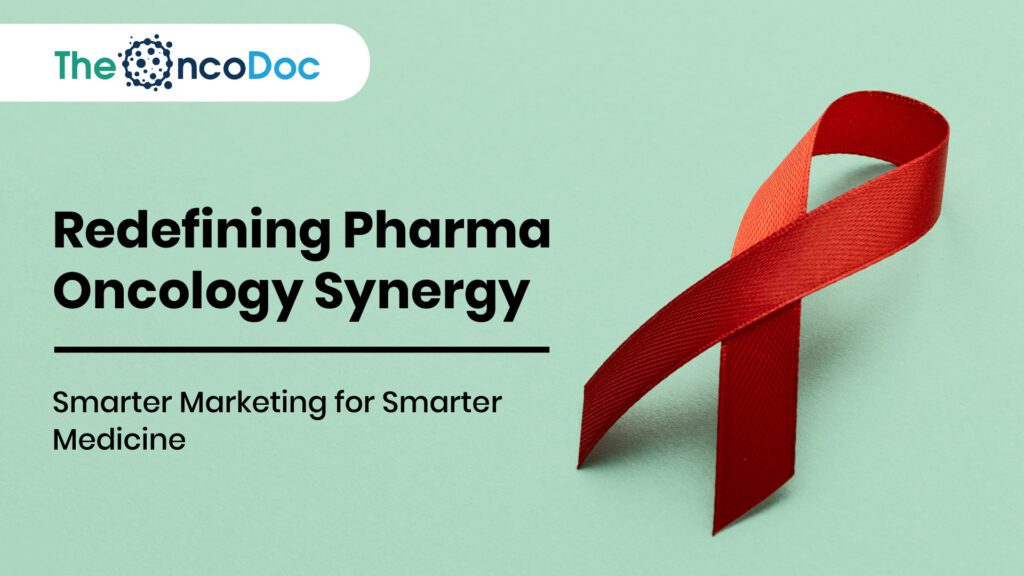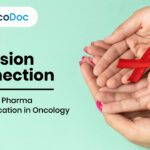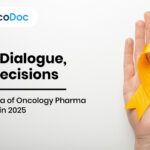Introduction: Pharma’s New Frontier in Oncology
By 2025, the relationship between pharmaceutical companies and oncologists has transformed into one of data-driven partnership and collaborative care delivery. As cancer care becomes more complex with precision medicine, immunotherapies, and molecular diagnostics, oncologists seek more than promotional messaging-they demand real-world clinical value. The era of pharma marketing has shifted towards patient-centricity, education, and enabling early detection. This article delves into the modern dynamics of oncology-focused pharma marketing, enriched by AI tools, ethical practices, and hyper-personalized outreach strategies.
Today’s oncologist is a discerning consumer of scientific content, a frontline decision-maker, and a key stakeholder in early detection initiatives. For pharma marketers, this means understanding their workflows, pain points, and knowledge gaps while crafting value-added strategies that enable-not interrupt-the care continuum.
1. The Modern Oncologist: A New Kind of Customer
Gone are the days when a rep’s product brochure was enough to influence prescribing patterns. Oncologists today are deeply involved in evidence-based decision-making and time-sensitive clinical care. Their expectations include instant access to validated research, clear comparisons of treatment efficacy, and tools that simplify communication with patients. These clinicians operate in multidisciplinary tumor boards, rely on digital knowledge repositories, and are constantly updated on emerging biomarkers and therapies.
Pharma marketing must now act as a resource center-offering solutions rather than just spotlighting products. Content must be clinically verified, case-relevant, and delivered in formats that blend into their daily routines-be it a quick WhatsApp summary, an interactive visual of treatment algorithms, or a concise slide deck for CME sessions.
These figures emphasize that oncologists value education, enablement, and early intervention as much as efficacy claims.
2. Going Beyond Product Promotion: The Shift to Ecosystem Thinking
The ecosystem approach encourages pharma companies to understand oncology as a journey, not a transaction. From symptom recognition to treatment completion and beyond, oncologists navigate multiple systems-from diagnostics and radiology to pathology, surgical interventions, and palliative care. Marketers must understand this workflow to insert value-adding tools along the way.
This may include digital decision trees for second-line therapies, biomarker-matching platforms, adverse event management resources, and rehabilitation support. Rather than promoting isolated drug benefits, marketers are offering integrated platforms that support diagnostic pathways, adverse event monitoring, and post-treatment survivorship care. By acting as a clinical ecosystem partner, pharma becomes a catalyst for outcome optimization.
3. Personalization in Practice: Using AI to Segment Oncologist Preferences
AI-driven CRM platforms now help pharma marketers identify individual oncologist preferences based on location, language, tumor specialty, and previous engagement behavior. This is more than basic targeting-it’s dynamic profiling.
A gynecologic oncologist in a metro hospital might prefer structured webinar invites and peer-reviewed summaries, while a general oncologist in a Tier 3 town may want simplified, vernacular WhatsApp messages. Behavioral data-such as how often they click educational links, complete CME quizzes, or download case materials-feeds back into the content pipeline, enabling precision personalization.
Such data-driven personalization not only improves engagement rates but also positions the brand as an intuitive partner in the physician’s journey.
4. Channel Optimization: Meet Them Where They Are
Pharma communication can no longer rely solely on face-to-face interaction. The average oncologist juggles 15–30 consults daily, multidisciplinary reviews, research, and continuing education. Time is fragmented, and attention is a scarce resource.
Thus, delivering content on the channels they frequent-at times they prefer-is vital. Medical apps now serve as clinical companions. Webinars serve for in-depth learning. WhatsApp is preferred for reminders, summaries, and peer interaction. Social media serves younger oncologists seeking community and crowd-sourced updates.
Strategic allocation across channels not only ensures reach but also respects the communication preferences of different oncologist personas.
5. Building Trust: From Transaction to Collaboration
Trust is the foundation of effective engagement. It is earned through transparency, evidence-based communication, and educational consistency. Oncologists frequently scrutinize the source of content-preferring materials backed by guidelines (NCCN, ESMO), validated by peers, and free from overt commercial bias.
Partnerships with medical associations, co-branded CMEs, and case co-authorships create collaborative credibility. Long-term relationships are built when pharma consistently delivers resources that help the oncologist in real-world scenarios-whether it’s managing irAEs or interpreting complex biomarker reports.
6. Disease Education as a Value Offering
Oncologists frequently cite misinformation and health illiteracy as key obstacles in patient care. Pharma companies can provide tangible value by helping physicians bridge this information gap. Educational content that is easy to share-such as regional-language videos, visual symptom checkers, simplified patient booklets, and side-effect management charts-equips oncologists with communication tools tailored for diverse populations.
Furthermore, these resources not only save physicians’ time but improve adherence and understanding on the patient side. By supporting oncologist-patient conversations, pharma aligns its educational role with patient-centric goals, increasing brand value without aggressive promotion.
7. The Clinical Trial Edge: Bridging the Gap Through Education
Despite advancements, clinical trial enrollment in India remains below global benchmarks. This is often due to a lack of awareness about ongoing trials, eligibility complexity, and concerns around patient logistics. Pharma companies can support oncologists by offering access to live trial databases, eligibility assessment bots, and co-branded informational leaflets that simplify the referral process.
Moreover, including trial inclusion/exclusion criteria in CME sessions or digital content can normalize trial conversations. When oncologists feel more confident discussing trials with patients, recruitment rises-and pharma becomes a research enabler, not just a sponsor.
8. KOLs, Micro-Influencers & the Democratization of Influence
While well-known KOLs continue to shape national discourse, local and mid-tier voices have emerged as trusted clinical leaders within their districts or specialties. AI tools can now detect which regional oncologists generate the most engagement on discussion boards, CME apps, or peer channels.
Engaging these micro-influencers for region-specific campaigns-such as cervical cancer screening in the northeast or tobacco education in central India-delivers more authenticity than celebrity endorsements. This democratization allows pharma to reach deeper into grassroots oncology networks.
9. Measuring the Right Outcomes: Beyond Clicks and Likes
The most impactful marketing efforts aren’t measured by impressions-they’re measured by clinical actions. Pharma must move beyond vanity metrics to evaluate: – Increase in patient screenings or diagnostic tests – Repeat usage of tools like symptom checkers – Growth in CME enrollments – Oncologist referrals to co-branded services
Establishing KPIs linked to patient behavior change or clinician adoption provides real insight into campaign success. These data points are essential for justifying marketing ROI in value-driven oncology care.
10. Hyperlocal Messaging for Regional Relevance
India’s healthcare needs are highly regionalized. A generic campaign might underperform if it doesn’t reflect local language, epidemiology, and digital literacy levels. AI can help segment regions not only by language, but also by dominant cancer types, treatment accessibility, and public health gaps.
For example, a breast cancer awareness campaign for Punjab might focus on lifestyle risk factors and hospital partnerships, while one in Assam may require community health worker engagement and mobile van screenings. Precision marketing rooted in regional realities ensures stronger message penetration and clinical impact.
11. Digital Rep 2.0: The Rise of Virtual Field Forces
With the pandemic reshaping rep access, many oncologists now prefer hybrid or digital-first engagements. Virtual reps-powered by AI and CRM integrations-can offer timely, relevant updates without disrupting clinical schedules.
These digital interactions may include: – Personalized emails with embedded guideline updates – Real-time product FAQs answered via chatbot – Smart scheduling for follow-up based on oncologist availability
Not only do virtual reps lower operational costs, they also scale personalized interactions across multiple geographies.
12. Integrated Patient Pathway Support
Pharma’s role doesn’t end at prescription. Oncologists face increasing pressure to offer continuity of care, particularly in complex cancer journeys. Pharma can add value by offering: – Mobile apps for patient symptom tracking – Educational modules for caregivers – Post-treatment care kits with rehab tips – Templated digital reminders for follow-ups
These tools help physicians extend support beyond the clinic, improve outcomes, and foster stronger emotional connections with the brand.
13. Ethical Guardrails: Compliance Is Not Optional
Trust once lost is hard to regain. In oncology-where decisions carry profound weight-ethical marketing is non-negotiable. All campaigns should adhere to UCPMP standards, disclose sponsorships transparently, and avoid off-label promotion unless clinically justified.
Oncologists are especially sensitive to bias. Providing fair-balance literature, comparative studies, and avoiding pushy promotion ensures long-term credibility. Ethics is not a limiter-it is a growth enabler in oncology.
14. Future Outlook: What’s Next in Oncology Marketing?
As technology advances, so will oncology marketing. Emerging frontiers include: – AR/VR simulations for treatment walkthroughs – AI-based content generators creating tailored CME decks – Predictive analytics suggesting content based on clinical case load – Voice-first campaigns targeting low-literacy regions via IVR
Adopting these innovations requires investment and upskilling but offers significant differentiation in a competitive landscape.
15. Rapid Response Units for Misinformation Management
Online misinformation can mislead patients and disrupt trust. AI-based social listening tools can detect spikes in search terms like “is chemo deadly” or “cancer spread by biopsy” and flag pharma teams for immediate action.
Quick-turnaround campaigns, verified by oncologists and distributed through trusted channels (WhatsApp, community health groups), help counter myths effectively. Being seen as a first responder to misinformation further elevates pharma’s reputation.
16. Supporting Oncologist Mental Health & Burnout Awareness
Oncologists deal with constant emotional and intellectual stress. Pharma can support their well-being through: – Sponsoring access to mental health platforms – Distributing digital stress-relief toolkits – Facilitating mindfulness and wellness webinars
Such campaigns signal respect and empathy, encouraging long-term emotional loyalty from healthcare professionals.
17. Smart Surveys to Track Evolving Oncologist Needs
The needs of oncologists aren’t static. Periodic micro-surveys embedded in apps or distributed via email can help pharma teams understand emerging trends: – Are oncologists facing more side-effect questions? – Are new drugs being misunderstood? – Is there demand for quick case references?
Real-time insights inform content updates and strategic pivots, allowing campaigns to stay responsive and relevant.
18. Multilingual CME Micro-Credentials
Traditional CMEs are long and English-centric. To reach a broader oncologist base, pharma can launch short, modular CME programs in regional languages, issued as shareable badges or certificates.
These micro-courses-delivered via WhatsApp or mobile apps-help doctors earn credit quickly and update their knowledge base with minimal disruption to their practice. It’s a win-win for learning and loyalty.
19. Targeted Post-Treatment Care Campaigns
After treatment, patients need help navigating life again. Pharma can enable oncologists with post-care content on: – Nutrition for survivors – Fertility preservation – Mental health screening – Managing fatigue and lymphedema
When brands offer content that sustains life after cancer, they build long-term emotional equity-not just prescription preference.
Conclusion: From Influence to Impact
To succeed in oncology marketing today, pharma must shift from promotion to partnership. The brands that succeed will: – Understand regional needs – Support clinicians with digital tools – Co-create educational assets – Use AI for intelligent personalization – Operate with unwavering ethics
Ultimately, the marketer that enables oncologists to make faster, clearer, and more compassionate decisions is the one that will leave a lasting impact.
The Oncodoc team is a group of passionate healthcare and marketing professionals dedicated to delivering accurate, engaging, and impactful content. With expertise across medical research, digital strategy, and clinical communication, the team focuses on empowering healthcare professionals and patients alike. Through evidence-based insights and innovative storytelling, Hidoc aims to bridge the gap between medicine and digital engagement, promoting wellness and informed decision-making.



